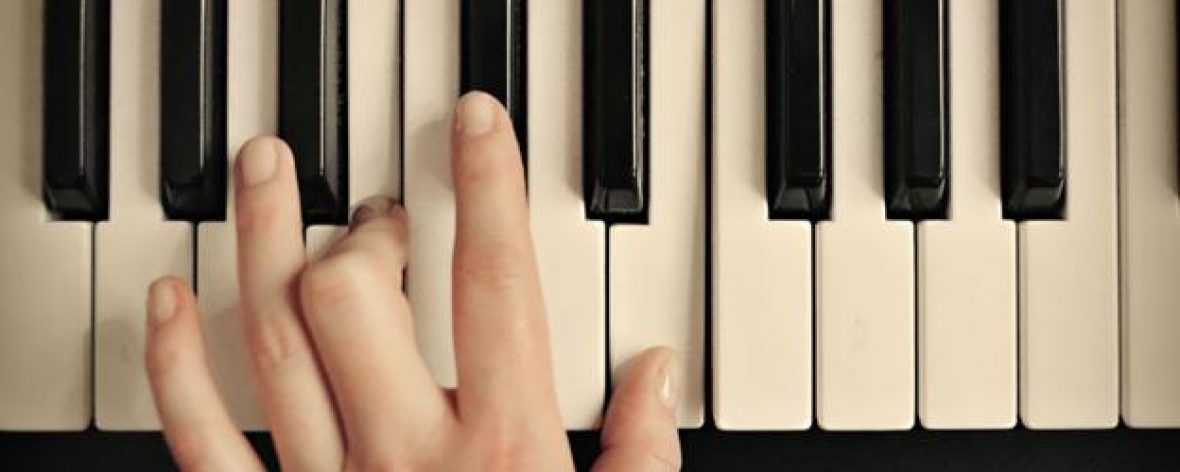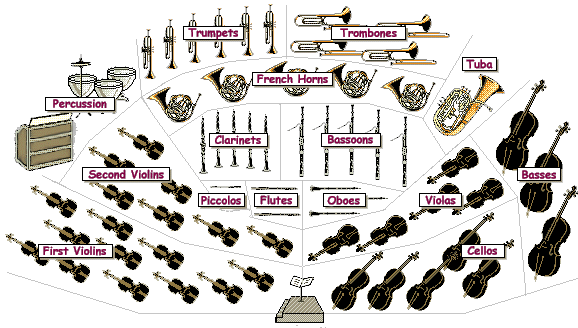The modern classical orchestra has a distinct ‘seating plan’, and is organised by different groups of instruments – strings (violins, violas, ‘cellos, double basses), woodwind (flutes, oboes, bassons, clarinets), brass (trumpets, trombones, horns) and percussion (drums, cymbals, triangles, xylophones). The conductor leads this group of musicians, reading the music from an ‘orchestral score’, which is a copy of all the music for each instrument. The modern classical orchestra looks like this:
You can find out more about the modern orchestra here, including information on each group of instruments.
The piano is usually a ‘solo’ instrument, and is not part of the general orchestra. It is brought onto the stage specially for a particular piece, usually a ‘Concerto’, a large-scale work for piano and orchestra in three or four movements (or sections). The piano is usually positioned to the left of the conductor, in front of the first violins. A modern concert grand piano is between 2.2 and 3 metres long. Here are a few of the most famous concertos written for piano:
Mozart – Piano Concerto No. 21 (‘Elivira Madigan’ – so called because the famous slow movement was used as a soundtrack for a film of the same name)
Beethoven – Piano Concerto No. 5 ‘Emperor’
Grieg – Piano Concerto in A minor, Op 16
Tchaikosvky – Piano Concerto No. 1 in B flat minor
Rachmaninov – Piano Concerto No. 3
Saint-Saens – Piano Concerto in G minor
Listen to some piano concertos here



1 thought on “Seating plan: the modern classical orchestra & the piano”